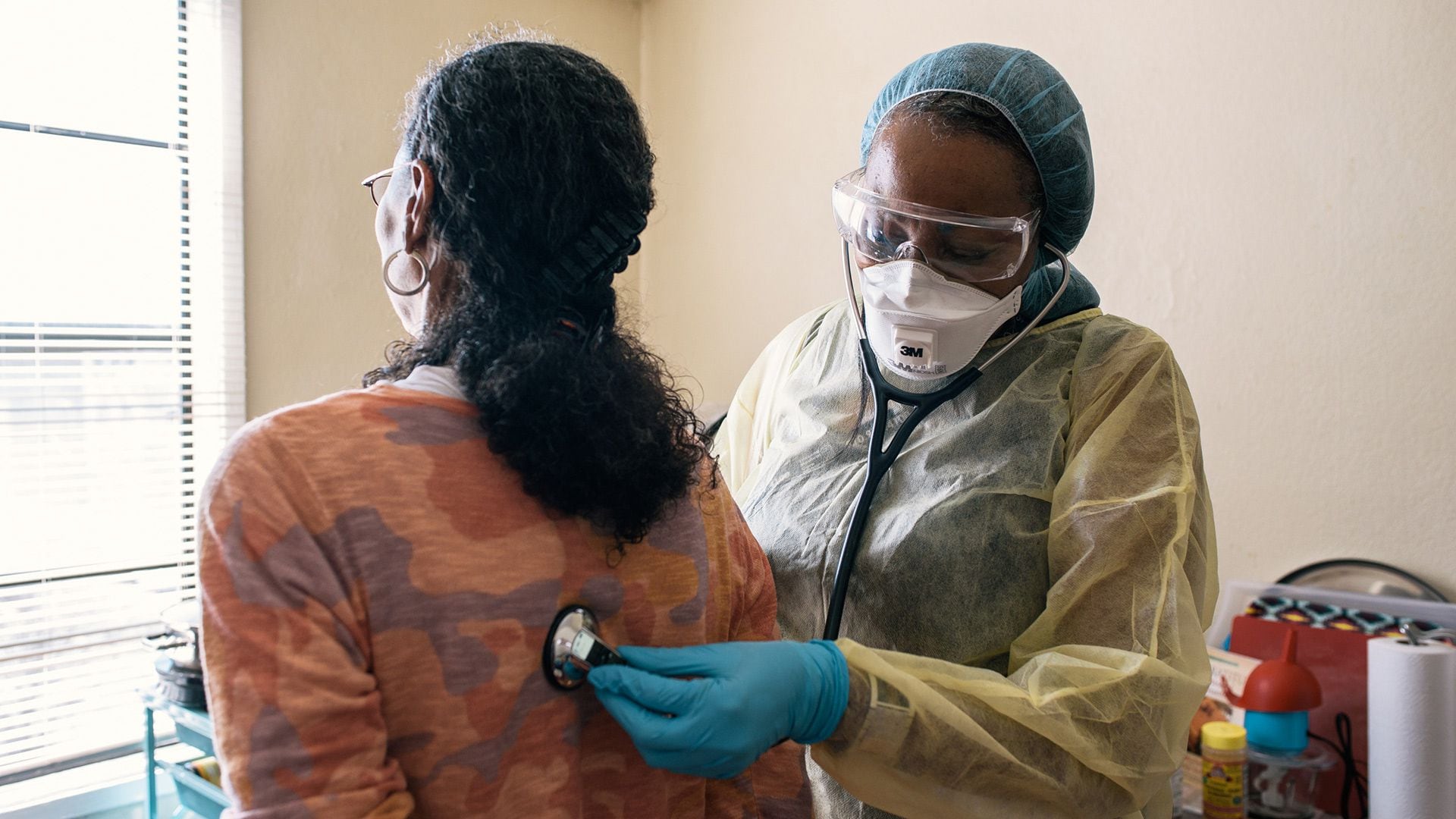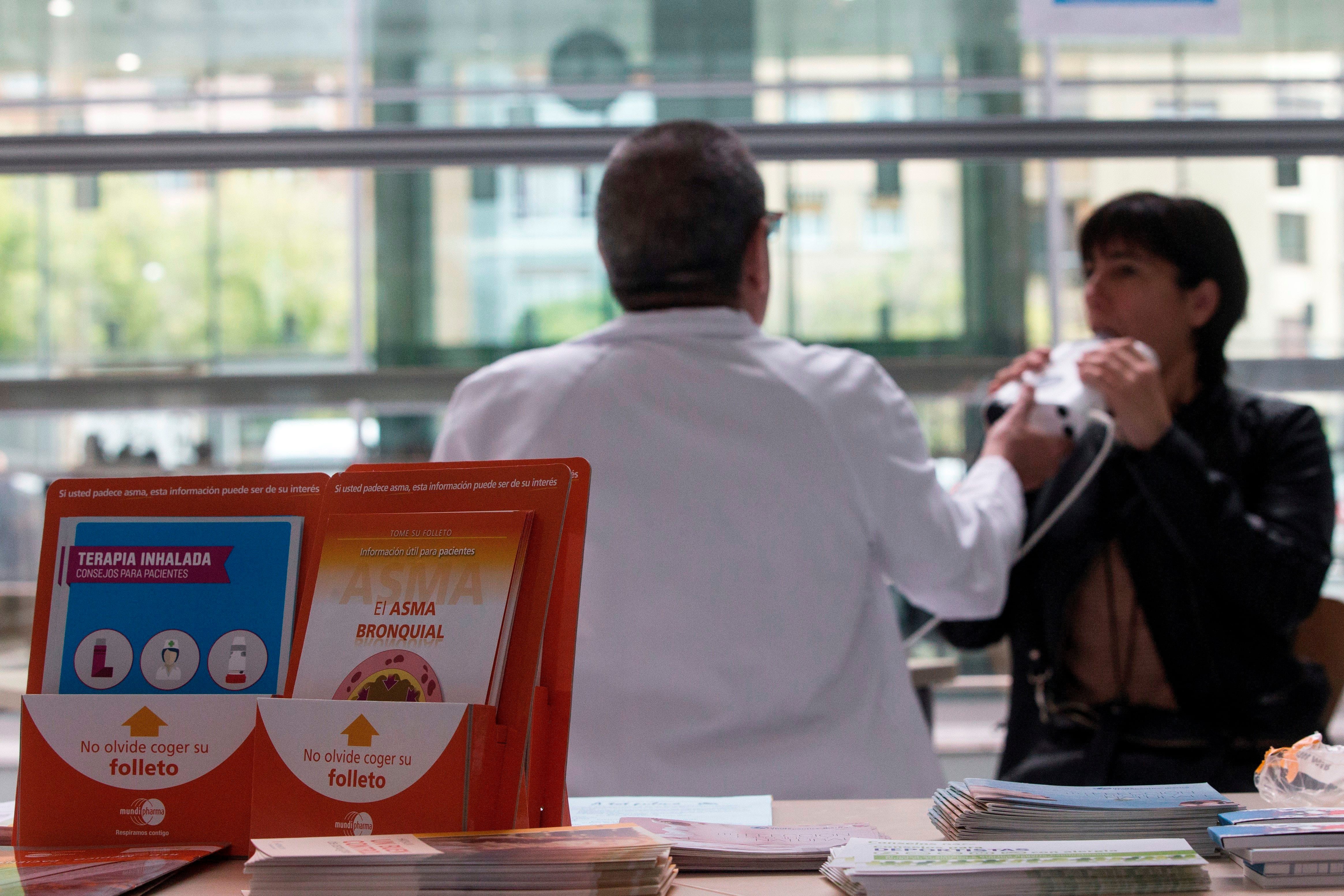
After having passed the coronavirus infection, whether asymptomatic, with few symptoms or in severe form, there is a persistent fear in all patients: prolonged COVID or Long COVID.
Globally, it is estimated that more than 10% of patients who have undergone COVID-19 have gone through a prolonged or persistent COVID experience, something that is on the way to becoming one of the most frequent medical visits in the not too distant future. In this syndrome, symptoms persist after four weeks of infection, and even prolongation can exceed 12 weeks.
It is characterized by symptoms such as extreme fatigue, shortness of breath, mental confusion, sleep disorder, fever, gastrointestinal problems, anxiety, depression, headache, palpitations and tachycardias, loss of smell and taste, among other disorders in different organs. 200 symptoms or signs have already been described related to the post-acute picture of the infection, which is usually called prolonged COVID or post-COVID.
Specialists from around the world warn that a large number of adults and young people who suffered COVID, even if they did not have pre-existing diseases, could face serious health problems in the coming years. A topic that includes those who did not have the disease with symptoms.
Other infectious diseases that have caused epidemics or pandemics, such as influenza, poliomyelitis or Ebola fever, have also affected those affected, and there are experts who believe that they should be learned from the lessons left by those public health emergencies of the past.
“In general, the physical consequences of infections become visible to society. Which is why it is taken as a public health problem. The impact on mental health goes more unnoticed, almost to the point of being made invisible. The long-term consequences of the virus are not yet clear, but clearly these years of the pandemic have generated many mental health problems, which will have an impact in the medium and long term. Health systems must be prepared for the years after the coronavirus pandemic,” Ariel Goldman, president of the Argentine Health Economics Association, told Infobae.
“Recent history shows us that many diseases, especially viral diseases, can leave very disabling long-term consequences and the worst thing is that doctors are highly trained to treat emergencies or acute illnesses and less able to deal with “the day after” of the damage that chronic diseases can leave,” warned cardiologist Mario Boskis, of the Argentine Society of Cardiology.
In dialogue with Infobae, the expert added: “Many people recovered from COVID-19 consult us for persistent symptoms, such as fatigue, shortness of breath, joint pain or cognitive disorders. The most frequent speech is that they feel that they are not the same person they were before the infection. The challenge now is to find a causal relationship between the virus and the symptoms. Its absence in diagnostic tests leads us to think of an inflammatory reaction, triggered by the virus that persists for months.”
The World Health Organization (WHO) has finally decided to define this pathology and thus recognize the existence of a disease, which is a fundamental support for all those patients who have had to listen too many times that everything was in their heads, or that all you needed was patience.
It is such a necessary action that the Spanish Society of General and Family Physicians (SEMG) already had its own description and are now immersed in the creation of guides and protocols for its approach. “The importance of a definition is that it gives a specific weight and its own entity to the disease,” explains Lorenzo Armenteros, spokesperson for the SEMG, which seeks to create a large patient registry that allows us to measure the disease. In this way, the clusters can be defined, patients grouped according to different characteristics such as age, gender or comorbidities, and thus study the incidence in each specific group.
The so-called post-infectious syndromes are old known in medicine. They arise as a result of a generally viral process (such as a simple flu) and are characterized by a condition of tiredness sometimes accompanied by headaches. But persistent COVID is something quite different. Something similar did not even arise after the disease caused by other coronaviruses such as SARS and MERS, or at least it did not have statistical significance.
Experts for now know, according to early statistics, that persistent COVID seems more prevalent in men. The same happens with serious illness, for which both hospital admission and sequelae occur more often in men with chronic pathologies. In what both are assimilated is the low prevalence in children (between 1% and 4% for persistent COVID).
Another major future problem may be early aging, there are studies that predict it for those who have had coronavirus. As with any chronic disease, there are aspects that we will not be able to know until the years pass, but there are still many questions that we must try to answer today.
Who is most at risk for it?

Scientists have launched themselves to try to find out which patients are most at risk of developing prolonged COVID and what would be the triggers of such a situation. Research that has just been published in the specialized media Cell indicates that specialists from the Seattle Institute of Systems Biology seem to have located partial answers.
People who have circulating fragments of the coronavirus, specific antibodies directed against their own tissues or organs, and a resurgence of the Epstein-Barr virus seem to be at greater risk, according to specialists in their paper. Scientists are on track to better understand and predict prolonged COVID, with which patients still face a wide range of health problems months after recovery. The team of more than 50 researchers found some markers that could be identified early and would seem to correlate with long-lasting symptoms, regardless of whether the initial infection was severe.
The researchers followed 309 patients with COVID from initial diagnosis to convalescence, two to three months later, and compared them with healthy control subjects. They analyzed blood samples and nasal swabs, integrating the data with patients' health records and self-reported symptoms.

After three months, more than half of the patients reported fatigue, and a quarter reported persistent cough. Others suffered gastrointestinal symptoms. The results of the study were complex, with different profiles associated with different symptoms. In general, scientists noted that one of the four factors is the level of coronavirus RNA in the blood at the beginning of infection, an indicator of viral load. Another is the presence of certain autoantibodies, antibodies that mistakenly attack body tissues as they do in conditions such as lupus and rheumatoid arthritis. A third factor is the reactivation of the Epstein-Barr virus, a virus that infects most people, often when they are young, and then becomes dormant.
The final factor is having type 2 diabetes, although researchers indicated that in studies involving a larger number of patients, it could turn out that diabetes is just one of several medical conditions that increase the risk of prolonged COVID. The authors noted that their findings determine possible treatment strategies that include “antiviral drugs, since they have an effect on viral load, and cortisol replacement therapy, for patients with deficiency.”
The complex study had several components and involved dozens of researchers at various universities and centers, including the Institute for Systems Biology, the University of Washington and the Swedish Medical Center in Seattle, where the study's lead medical author, Jason Goldman, is an infectious disease specialist.
Infographics: Marcelo Regalado
KEEP READING:
Últimas Noticias
Debanhi Escobar: they secured the motel where she was found lifeless in a cistern
Members of the Specialized Prosecutor's Office in Nuevo León secured the Nueva Castilla Motel as part of the investigations into the case

The oldest person in the world died at the age of 119
Kane Tanaka lived in Japan. She was born six months earlier than George Orwell, the same year that the Wright brothers first flew, and Marie Curie became the first woman to win a Nobel Prize

Macabre find in CDMX: they left a body bagged and tied in a taxi
The body was left in the back seats of the car. It was covered with black bags and tied with industrial tape
The eagles of America will face Manchester City in a duel of legends. Here are the details
The top Mexican football champion will play a match with Pep Guardiola's squad in the Lone Star Cup

Why is it good to bring dogs out to know the world when they are puppies
A so-called protection against the spread of diseases threatens the integral development of dogs




